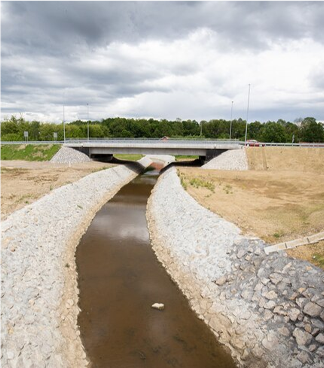Nov . 11, 2024 00:25 Back to list
Choosing the Right Submersible Drainage Pump for Your Needs and Applications
Understanding Submersible Drainage Pumps An Essential Tool for Effective Water Management
In the realm of modern plumbing and water management, submersible drainage pumps play a vital role. These pumps are specifically designed to operate while submerged in water, making them particularly effective for draining excess water from various environments. Whether it’s in construction sites, basements, or flooded areas, submersible drainage pumps are invaluable.
What is a Submersible Drainage Pump?
A submersible drainage pump is a device that is sealed to ensure that it can operate underwater without any issues. The design includes a motor that is hermetically sealed to prevent water ingress, allowing it to function effectively while submerged. These pumps are equipped with an impeller that helps move water effectively, whether it’s stagnant water in a sump pit or excess water accumulating on a construction site.
Key Features and Benefits
1. Efficient Water Removal Submersible drainage pumps are known for their efficiency in water removal. They can quickly pump out large volumes of water, making them suitable for emergencies such as flooding.
2. Versatile Applications These pumps can be used in a variety of applications, including residential basements, pools, construction sites, and industrial settings. Their versatility makes them essential for both homeowners and contractors.
3. Durability and Reliability Submersible pumps are designed to withstand harsh environments. Made from durable materials like stainless steel and thermoplastic, they can handle abrasive materials commonly found in water, such as sand or mud, thus ensuring longevity.
4. Ease of Use Operating a submersible drainage pump is straightforward. Once properly set up, they can be plugged into a power source, and the operation is largely automatic, allowing users to focus on other tasks.
How to Choose the Right Submersible Drainage Pump
Selecting the right submersible drainage pump involves several considerations
1. Pump Capacity Assess the volume of water you need to move. Pumps are rated by their capacity (usually in gallons per minute or liters per minute), so it’s essential to select one that meets your specific requirements.
submersible drainage pump

2. Head Height This refers to the distance the pump needs to lift the water. Ensure that the pump you choose can handle the total height from the water's surface to the discharge point.
3. Type of Liquid Consider whether the water will be clean or dirty. For muddy or debris-laden water, opt for a pump with a larger particle tolerance.
4. Portability vs. Permanent Installation Some pumps are portable, while others are designed for permanent use. Your choice should align with your specific need for mobility or ongoing water management.
Maintenance of Submersible Pumps
Routine maintenance is crucial for ensuring the longevity and efficiency of your submersible drainage pump. Here are some basic maintenance tips
1. Regular Cleaning Remove any debris or clogs that could hinder the pump's operation. Clean the inlet screen and other accessible areas.
2. Inspect Electrical Connections Check the wiring and connections to ensure they are secure and free from corrosion.
3. Test the Pump Regularly test the pump by running it to ensure it functions as expected. This is especially important before anticipated heavy rain or flooding events.
4. Store Carefully If not in regular use, store the pump in a dry place to prevent rust or corrosion.
Conclusion
In conclusion, submersible drainage pumps are essential tools for efficient water management in both residential and commercial settings. Their ability to quickly remove water from various locations makes them indispensable in flood prevention and management. By understanding their features, benefits, and maintenance needs, users can select and operate these pumps effectively, ensuring peace of mind during water emergencies. Investing in a quality submersible drainage pump can prove to be a wise decision for anyone dealing with the challenges of water management.
-
Submersible Water Pump: The Efficient 'Power Pioneer' of the Underwater World
NewsJul.01,2025
-
Submersible Pond Pump: The Hidden Guardian of Water Landscape Ecology
NewsJul.01,2025
-
Stainless Well Pump: A Reliable and Durable Pumping Main Force
NewsJul.01,2025
-
Stainless Steel Submersible Pump: An Efficient and Versatile Tool for Underwater Operations
NewsJul.01,2025
-
Deep Well Submersible Pump: An Efficient 'Sucker' of Groundwater Sources
NewsJul.01,2025
-
Deep Water Well Pump: An Efficient 'Sucker' of Groundwater Sources
NewsJul.01,2025
-
 Submersible Water Pump: The Efficient 'Power Pioneer' of the Underwater WorldIn the field of hydraulic equipment, the Submersible Water Pump has become the core equipment for underwater operations and water resource transportation due to its unique design and excellent performance.Detail
Submersible Water Pump: The Efficient 'Power Pioneer' of the Underwater WorldIn the field of hydraulic equipment, the Submersible Water Pump has become the core equipment for underwater operations and water resource transportation due to its unique design and excellent performance.Detail -
 Submersible Pond Pump: The Hidden Guardian of Water Landscape EcologyIn courtyard landscapes, ecological ponds, and even small-scale water conservancy projects, there is a silent yet indispensable equipment - the Submersible Pond Pump.Detail
Submersible Pond Pump: The Hidden Guardian of Water Landscape EcologyIn courtyard landscapes, ecological ponds, and even small-scale water conservancy projects, there is a silent yet indispensable equipment - the Submersible Pond Pump.Detail -
 Stainless Well Pump: A Reliable and Durable Pumping Main ForceIn the field of water resource transportation, Stainless Well Pump has become the core equipment for various pumping scenarios with its excellent performance and reliable quality.Detail
Stainless Well Pump: A Reliable and Durable Pumping Main ForceIn the field of water resource transportation, Stainless Well Pump has become the core equipment for various pumping scenarios with its excellent performance and reliable quality.Detail
